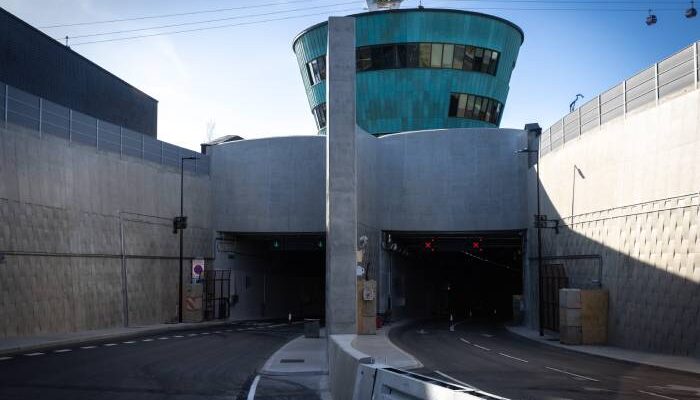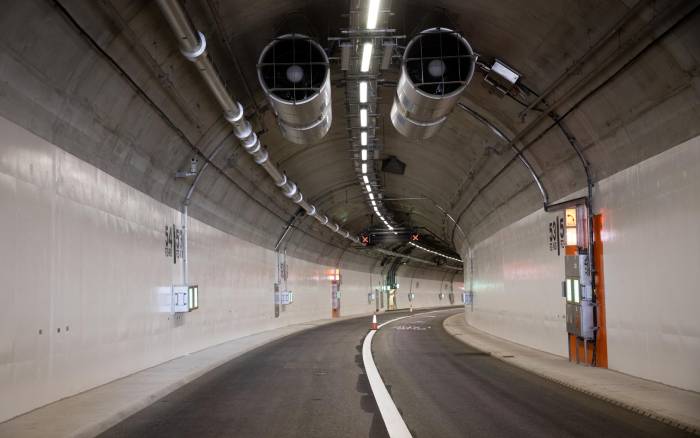The Silvertown Tunnel, London’s first new road crossing beneath the River Thames in over 50 years, officially opened on 7 April 2025. This 1.4-kilometre twin-bore tunnel connects Silvertown in Newham to the Greenwich Peninsula, aiming to alleviate the chronic congestion that has long plagued the nearby Blackwall Tunnel.
Transport for London (TfL) anticipates that the Silvertown Tunnel will significantly improve traffic flow in East London. Modelling suggests that average journey times could be reduced by up to 20 minutes during peak periods. Additionally, the tunnel is expected to provide a reliable alternative route during maintenance closures of the Blackwall Tunnel.
To manage traffic levels and fund the tunnel’s construction and maintenance, a user charge has been introduced for both the Silvertown and Blackwall Tunnels. The tolls are set at £4 for cars, £6.50 for vans, and £10 for lorries during peak hours. Discounts are available for local residents, small businesses, and low-income drivers.
In terms of public transport, the tunnel facilitates an increase in cross-river bus services from six to 21 buses per hour during peak times, all of which are zero-emission at the tailpipe. Notably, the new express bus route Superloop SL4 and the extended route 129 will operate through the Silvertown Tunnel, enhancing connectivity between East and Southeast London.
Cyclists are also catered for with a dedicated zero-emission cycle-shuttle service operating every 12 minutes from 06:30 to 21:30 daily. This service, free for at least the first year, allows cyclists to safely cross the river, addressing the prohibition of cycling and walking through the tunnels.
Stuart Harvey, Chief Capital Officer at TfL, remarked, “The new tunnel, along with the initial user charges, discounts and exemptions, will support growth in the local area and provide new public transport connections across the river.”
However, the project has faced criticism from environmental campaigners and local residents. Victoria Rance of the Stop the Silvertown Tunnel Coalition described the tunnel as “1970s technology” and advocated for its repurposing for public transport or cycling.
Despite the controversies, the Silvertown Tunnel represents a significant infrastructure development for London, with the potential to enhance traffic flow and public transport connectivity in the city’s eastern regions.
Logistics UK Senior Policy Manager – Road Freight Regulation Chris Yarsley says it will increase network resilience and make journey times more predictable, but feels the high toll charges penalise essential delivery vehicles who have no alternative means of servicing the capital: “Logistics UK has consistently supported the Silvertown tunnel project since its inception and, now it is open, the tunnel will play a key part in London’s road infrastructure.
“Road users have experienced significant bottlenecks at the Blackwall Tunnel and surrounding approach roads as there have been limited alternative routes to cross the Thames to the east of Tower Bridge. For HGVs, this was compounded by height issues at the Blackwall Tunnel which added additional time and cost to transport companies resulting in higher prices for London’s businesses, residents and visitors.
“The new tunnel at Silvertown will provide greater resilience for the capital’s road network and make journey times more predictable, but it is disappointing that the tolls for large vans and HGVs are significantly higher than those for small vans and private cars.
“Industry recognises that road charges are necessary to fund new infrastructure, but larger vehicles do not have the options to switch to other modes of transport and essential delivery vehicles have little alternative option but to use the capital’s road network. Industry ends up paying disproportionately more towards construction costs than private road users, and TfL should introduce a flat rate of tolls for fleet operators while offering discounts for zero emission vehicles, which would be more in line with the current London Congestion Charge scheme.”






















